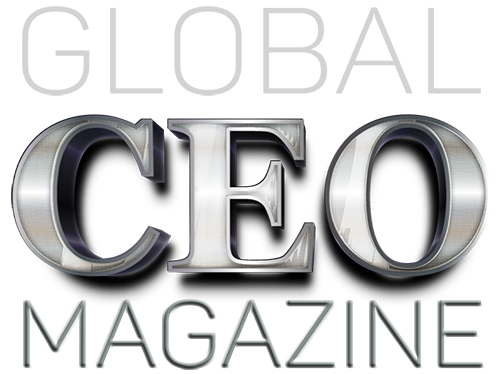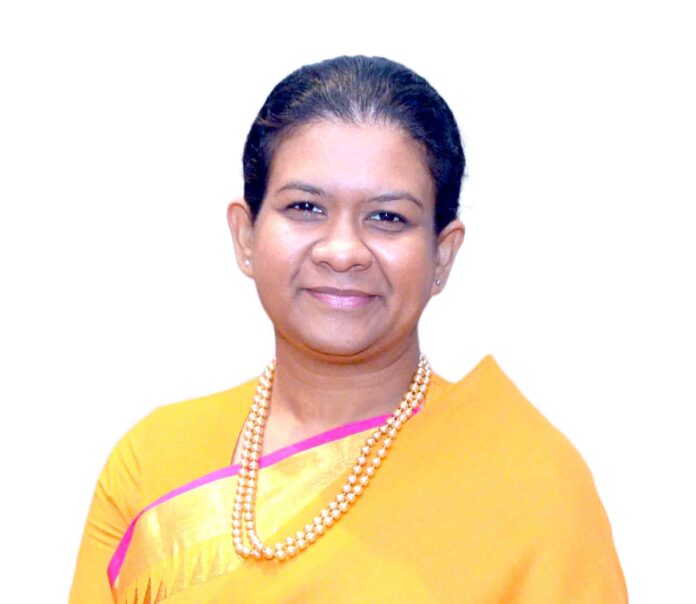By Sabrina Zavahir
Research has consistently underscored the economic benefits of gender equity, of female roles in the labour market, including leading to greater productivity and financial stability, thereby making economic sense.
But the lack of diversity within the corporate profession is holding back women entrepreneurship, a tool which can assist in gaining the momentum and support that is required to deliver solutions to complex economic challenges.
Globally female involvement in entrepreneurship has been recognized as an important catalyst to boost economic growth.
Females certainly play a pivotal role in empowering women to transform communities toward the well-being of society.
We, connected with Ms Seroshi Nandasiri, Founder & Chair of Women’s International Foundation (WIF) on enabling mechanisms to facilitate the involvement of a female’s role in entrepreneurship.
Q : TO ENCOURAGE WOMEN TO BE A PART OF BUSINESS, AN INTRODUCTION TO ENTREPRENEURSHIP IS REQUIRED FROM GRASSROOTS LEVEL. IS THIS YOUR VIEW POINT AS WELL?
Economic empowerment is at the heart of women’s empowerment. When economically empowered, her ability to make decisions and to put those in action are enabled and this reduces her dependencies and thereby vulnerabilities. That’s why economically enabling a woman is important. Also the ripple effect of economically empowered woman on the development and wellbeing of her family is immense. However, to enable her to be economically empowered, we need to get her involved in economic activity.
Employment and entrepreneurship are two ways we can facilitate her economic involvement. Not everyone can run a business. Some are born with entrepreneurship skills and some can be trained. Those who are not interested in business can go into employment. Whatever the way, women can sort into the best fit for them. Some even do it in a hybrid mode. All is fair, as long as she is involved in some economic activity. Personally, I believe, entrepreneurship is the best fit as it can provide her with a greater flexibility and scope to grow. They can even create their own future by embarking on a journey of entrepreneurship. I also have to say, that the journey is not a bed of roses. She needs lot of support and a conducive eco system to progress.
Economic empowerment of women, especially in Sri Lanka has a powerful story behind it.
Our gender equality and women’s empowerment indicators are falling and it has been happening over a period of time. We have been the STAR in South Asia in terms of gender equality and women’s empowerment, but other counterparts such as Bangladesh, Nepal, and Maldives are overtaking us and moving forward.
In Sri Lanka, 52% of Sri Lanka’s population is represented by women and about 25% of our households are headed by females (i.e. about 1/4th of the families are headed by females). Yet, women’s economic participation remains at 32%. Youth unemployment rate for women is also high at 36% compared to men. Of our SMEs, only 25% are women owned. These are some facts that talk about our women’s involvement in economic activity.
Another area of concern is political participation. Sri Lanka’s female representation in parliament is only 5.3%. Sri Lanka currently ranks 179 out of 189 countries for the percentage of women in national parliament.
Sri Lanka has invested heavily in women’s development, especially in areas of education and health. We have almost bridged the gap in those areas. However, we as a nation have failed to reap the benefits of the investment made, where women are not contributing adequately to the economy and to politics. Thus yielding low ROI (return on investment). This is a business case for Sri Lanka. How we underutilize one of the crucial resources we have. This has made our economies inefficient.
So, it’s high time we look at this problem in a different perspective and consider it as a strategic pain point that needs to be addressed with some urgency. There are many things we need to do, especially for entrepreneurship and thereby to promote economic empowerment.
Skill, capacity and ability development is essential to promote entrepreneurship at the grassroots levels. But this needs to happen in a more strategic and pragmatic manner rather than the current adhoc practice. Also, championing and building a care economy will be essential to facilitate our women to actively engage in the economy. Further, awareness across the social strata to break barriers such as gender stereotypes, norms and roles that inhibit women to move forward are of paramount importance. These changes take time and cannot be done overnight. However a structured, strategic approach will help in breaking the glass ceiling and in navigating the glass cliff for women in Sri Lanka.
Q: WOMEN ENTREPRENEURSHIP GLOBALLY HAS BEEN RECOGNIZED AS AN IMPORTANT CATALYST FOR A BOOST IN ECONOMIC GROWTH, HOW PRACTICAL IS THIS FOR SRI LANKA?
Entrepreneurship is the way forward. It will enable women to create opportunities and to break barriers.
UNDP in one of their strategy reports in 2018 stated that if women are given equal opportunity to contribute to economic activity, global GDP could be increased by 3.6% by 2030 (pre covid estimates) and can lift about 100-150 million people out of hunger. This is a clear indication of the importance of women’s economic participation and thereby the importance of promoting entrepreneurship as a means of economic empowerment.
Entrepreneurship is gaining momentum and support that it required. There are many government organisations working in this space to promote it, I was told that there are about 70-80 government organisations on average assigned with the task of promoting and supporting entrepreneurs in Sri Lanka. Also there are many corporates, organisations and development sector partners working in this space trying to promote entrepreneurship. But we have a long way to go.
There are barriers that inhibit women from entering this space, such as care problems, gender norms and labels made against them. Also raising finance is another issue. “Collateral free” funding, low cost funding, grants and working capital support are required. Finding markets is another major issue. There are lots of hindrances in the legal framework that don’t support entrepreneurs at all. Take for an example the registration process. It is not easy to commence and to run a business in Sri Lanka. Especially for a woman it is even tough!!
So, what do we need to do to overcome this? First of all we need to make our systems, processes and organisations more sensitive towards the needs of women. Currently they don’t cater to any of their needs. This has resulted in the low participation of women at the policy making levels. Secondly, wider, strategic and sustained interventions need to be made to capacitate current and potential women entrepreneurs.
Thirdly technology adaptation needs to be promoted as a barrier breaker in terms of markets and marketing, production, capacity and operational support. This is also a target specified under goal five of UN SDGs (sustainable development goals). Fourth, we need to support women with a creation of a “care economy.” This will help women better manage their time constraints and family commitments and effectively engage in economic activities. Also, this is another front will open new entrepreneurial opportunities and frontiers of business to excel. These will help our women entrepreneurs to thrive and for potential to enter into the “space.” Above should also be done parallely and in integration to ensure impact and results.
Q : FEMALES PLAY A PIVOTAL ROLE TOWARDS THE WELLBEING OF A SOCIETY. ARE THERE ANY WOMEN LED ASSOCIATIONS OR PROJECTS THAT HAVE NOT YET BEEN HIGHLIGHTED?
I believe, women at the grassroots level are not highlighted and given enough prominence. There are some amazing stories and personalities hidden at the grassroots level. They don’t have the space to emerge nor are they given the importance in the current context. Consciously or unconsciously, we become victims of nepotism adn cronyism and highlight those who are able to afford prominence. This, in my perspective is unhealthy. Those who truly deserve to be recognised don’t get highlighted. Thus the true spirit of women empowerment will not be upheld.
We need to create space for all women, equally, to advance, to feature and to be given a voice in society. I work with so many such community based organisations which are trying to break those barriers for women. Progress is slow, but definitely smooth and fast!! These community based organisations are in plenty and they not only champion women’s empowerment but also support the achievement of the sustainable development goals at a community level.
Such organisations need to be given resources, guidance and opportunities. Also an integrated, holistic outlook is needed to support and to promote such community based organisations. This will help them break barriers and sustain progress.
Another aspect which has not being recognized is men’s involvement. Women’s movements in the past have negated and overlooked the role of men in the empowerment of women. Thus man has been missing from the equation and over time this has resulted in a negative impact to the family unit, where we see high divorce rates such as 400 per day happening as revealed at a research conducted by the Department of Social Services. Men have been stuck in traditional norms, roles and behaviours which has resulted “inequity” to perpetuate over time. We need to convert men as allies in this journey.
They have to be educated on the “new masculinities.” Men are a pivotal group for women’s empowerment whose importance however has not been recognized adequately. Therefore we need more campaigns to highlight this matter and men coming forward as change champions.
Q: WOMEN OF TODAY ARE READY TO EXPLORE NEWER MANAGEMENT DECISIONS WITHOUT BEING CONFINED TO TRADITIONAL LEADERSHIP STYLES OR MANAGERIAL APPROACHES. WHAT SHOULD WOMEN LEADERS IN BUSINESS FOCUS ON TO GROW FURTHER?
Women need to master “Self-Leadership.” Also women leaders should carve out their own style of leadership. You should not conform yourself to a man’s idea of what a leader should look like. Most of the time, we try to fit in to a framework prescribed and end up falling off a so called “Glass Cliff.” This is true for both politics and business.
Instead we need to be ourselves and find our character and based on that build our own style of leadership. Best example is Jacinda Arden, Former Prime Minister of New Zealand.
She had an exceptional approach to motherhood and brilliantly depicted her multitasking skills in getting the job done.
Jacinda Arden was able to successfully lead New Zealand during a time of crisis through her unique character of kindness, empathy and open communication. Today she has become a hallmark of leadership, celebrated globally. She is one leader who was able to break the “glass ceiling” of leadership while navigating all “glass cliffs” of failure in her own unique style and way. Similarly, our women leaders, may it be business or politics or any other need to be authentic. Mastering ‘Self Leadership” will enable them rediscover themselves and their unique leadership style. This will not strain them nor will it put pressure on them. Rather it will help them to sail smooth and fast. So we need to promote this and talk more about this.
In this journey, one thing to remember is that, you will be tested many a times. There will be “labels” against you. But you cannot afford to react to those. Instead keep moving, keep performing, keep true to yourself and be patient. You cannot “give up.”
Another important aspect is networking for women. We are quite poor in this and it doesn’t have to be the traditional way of networking. We can rediscover new ways and methods of networking. For example, it can be in the form of a “kids day out,” “virtual networking,” “buddy or a mentor programme” or a “virtual group membership.” Networking will enhance solidarity and bargaining power for women.
Q: BUSINESS WOMEN FROM OUR UNDERSTANDING TEND TO STRUGGLE WITH WORK LIFE BALANCE. IN YOUR PERSPECTIVE HOW SHOULD THIS UNDERSTANDING OF THE WORK LIFE BLEND CONCEPT BE MASTERED?
I look at it in a slightly different manner.When talking about work-life-balance, a recently conducted research published in Harvard Business Review by Robin J. Ely and Irene Padavic identifies the culprit as the unfavorable work practices adopted by the organisations. Specially long work hours. This has resulted in over-promising and over-delivering situations in the world of work with an attempt to delight customers, making work practices unfavorable.
” Organisations attempt to cover such inefficient work practices by pointing fingers at women’s inability to reach the top and to break the glass ceiling.”
This is not unique only to women but equally fair on both men and women. However women seem to be paying the higher price due to family commitments as they are being considered as the “nurturer.” This claim seems true even in the Sri Lankan context where women seem to be struggling with their triple burden of work (family, social and work commitments).
Organisations attempt to cover such inefficient work practices by pointing fingers at women’s inability to reach the top and to break the glass ceiling. Also the firms are quick to offer work-family accommodations as solutions in the form of part time work, taking leave from work, reduced work hours, etc. Women with their family priorities tend to opt for these options which in the longer run hinder their ability to advance in their careers. This situation not only curtails their career but also causes gender pay gap where women get paid less than their male counterparts.
If the inefficient work practices such as long hours are keeping women away from the world of work and away from reaching the top, such practices need to be relooked at as it hinders macro level productivity negating economic growth and value creation. No matter how much the companies claim “equal opportunities” and “non-discrimination,” if organisational norms and biases prevail and lip service is given to analyzing and not addressing the real causes, effective changes to rectify the situation will not take place. These require organisational policy level interventions and cultural changes.
Another major factor to consider is “Child & Elderly Care.” This is a problem area for many women in the world of work given the social trends such as population ageing. Care is a major contributor for the glass ceiling and gender pay gap. Thus this is an area which requires national level support and strategy and the championing of a “care economy” which is formalized, regulated and made affordable.
Women have gone time poor (thus the need for work-life-balance) due to “men” not being involved adequately in sharing the triple burden of work. The gender roles have traditionally allocated and stereotyped women with all household chores, community support and caring commitments.
These put pressure on women and exclude them from the world of work. Therefore we need to engage more ‘men’ in the discussion and convert them as allies where they are educated on the “new masculinities,” paving way for equality and opportunity creation.
Moreover, at a micro level, women also need to be capacitated on work-life-integration practices and on “multitasking” aspects to enable them better manage the pressures at the world of work.


